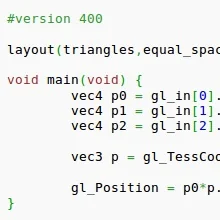VESA Pushes Out DisplayID 2.0 As The Successor To EDID For Monitors & Electronics

DisplayID 2.0 is designed to fill the needs of modern hardware with 4K+ resolutions, High Dynamic Range, Adaptive-Sync, AR/VR, and other use-cases not conceived when EDID first premiered in the 90's as part of the DDC standard. Over EDID and E-EDID, DisplayID switches to using a variable length data structure and makes other fundamental design differences compared to these older identification standards.
In today's VESA press release they further describe DisplayID 2.0:
The key difference between DisplayID 2.0 and EDID predecessors is its modular structure, based on the concept of “data blocks” – individually defined, self-contained data formats that each provide a specific set of related display information in a clear unambiguous manner. This benefit affords unprecedented flexibility, as entire content can be constructed from any number of elements, predefined data blocks or descriptors. The specification addresses head-mounted and other types of wearable displays; provides a clearer way to define Adaptive-Sync (i.e., dynamic refresh rate); extends field sizes to support higher pixel counts; expands the magnitude of parameters needed to enable HDR; and supports high luminance, to name just a few of the advanced technologies that DisplayID 2.0 covers.
Expect for DisplayID 2.0 support to begin surfacing in 2018.
Hopefully this post didn't remind you of the old days of Linux/X.Org with monitor/EDID problems being common, xorg.conf tuning for monitors, and other nostalgic Linux desktop experiences... Let's hope the DisplayID 2.0 rollout will go smoothly.
18 Comments

